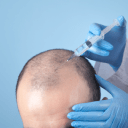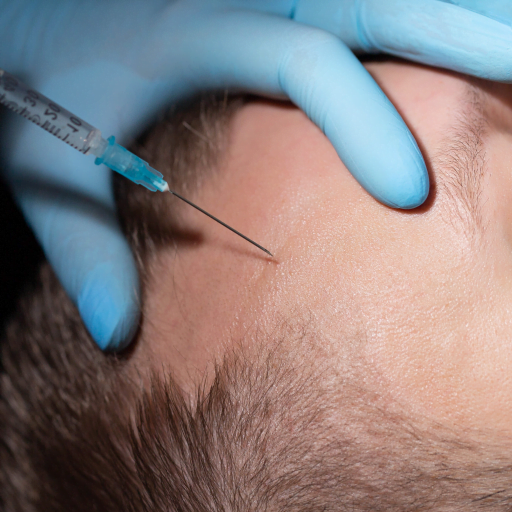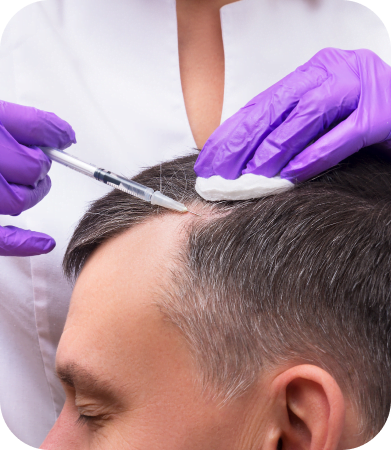Does PRP Work for Hair Loss?
PRP injections can stimulate the production of growth factor hormones in the body. This can increase the number of cells that promote healing, as well as stimulate hair growth. When injected into areas of hair loss, such as the scalp, PRP injections may encourage the body to start growing hair in the area where hair growth has slowed.
Research shows that platelet-rich plasma contains essential proteins and growth factors, such as:
- Epidermal growth factor (EGF)
- Insulin-like growth factor (IGF)
- Interleukin (IL)-1
- Platelet-derived growth factor (PDGF)
- Transforming growth factor (TGF)
- Vascular endothelial growth factor (VEGF)
These growth factors help new follicles form and cause new blood vessels to grow, which in turn could help the follicles produce hair more efficiently. The factors have also been shown to speed up and stimulate tissue repair, meaning they can help reverse the process that occurs in male pattern baldness.
In a 2014 study, 11 people who had not experienced desirable results from using oral finasteride or topical minoxidil received 2 to 3 milliliters of PRP (a blood product) four times. Researchers found that hair loss slowed between the first and fourth injections of PRP. The researchers found that PRP treatments were effective for treating people with male pattern baldness.


